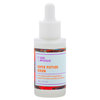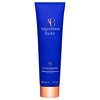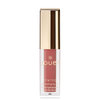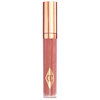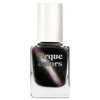The Photoshop Controversy: Does Photo Editing Alter Our Perceptions Of Beauty?
Published Oct 30, 2013


Maybe it was when Demi Moore appeared virtually hip-less on the cover of W Magazine. Or when Faith Hill’s wrinkles disappeared from that 2007 issue of Redbook. Spotless skin, toned bodies, silky hair, and not a wrinkle in sight: welcome to the fantasy world of airbrushing.

Most of us are well aware of the tricks and tweaks that are applied to the final photographs we pine over on magazine covers, editorial spreads, and fashion ads. If over the past few years it seemed like retouching was getting out of hand, today, airbrushing has understandably become public enemy number one. News and gossip sites like Huffington Post and Jezebel always promptly call out over-the-top Photoshop jobs, and now retouching accusations are even being hurled at bloggers and Instagram users. At the same time, brands like Dove have launched anti-airbrushing campaigns that shed light on the work that goes into many of the images we see of "perfect" models. Even a new magazine has been born: Verily, which aims to show all of its models and subjects without retouching. "Whereas other magazines artificially alter images in Photoshop to achieve the 'ideal' body type or leave a maximum of three wrinkles,” reads the publication's Photoshop Policy, “Verily never alters the body or face structure of our models."
This kind of beauty activism is noble. It’s frustrating, not to mention misleading, to witness celebs appear younger and younger on magazine covers as they're actually getting older. And, contrary to popular thought, it turns out retouching isn’t a new phenomenon. It’s been a part of photography since the beginning. Unlike today, early photo manipulation didn’t include a Healing Brush or any Copy and Paste shortcuts. Instead, photos were retouched by hand, using paints, inks, collage techniques, and yes, even real actual, airbrushing. Hollywood master photographer George Hurrell would use dyes directly on the film itself—film that was known for it’s low contrast quality, making blemishes less visible. Marlene Dietrich and Judy Garland, among Hurrell's other subjects appear flawless in ways that are still echoed in today's high-tech beauty shots.
Many of us fall victim to unattainable beauty desires—even if deep down we know computer-generated perfection will never be within grasp. Impossibly smooth skin and an appealingly plump pout in the latest makeup ads may turn some of us green with envy, and of course we feel anything but chuffed when the new foundation we purchased doesn’t make us look like Janelle Monáe, but then again, what did we really expect? After all, we’re buying makeup, not Photoshop in a can.
All that doctored beauty is a valid complaint. But it raises another question: what is real beauty? Does beauty always mean reality? While we police every photo to try and uncover its real “truth,” we may also need to start admitting that our relationship with “real” beauty involves a hefty dip into the fantasy world.
Imagination is what keeps beauty exciting. Glamour is an aspiration just like those glossy curls on Pantene Pro V commercials: sometimes attainable, but often all too easily washed away. Real life comes back swiftly in the form of premature wrinkles, post–high school zits, surprise flab, and undereye circles. But if CoverGirl was selling us the same face we greet every morning in the bathroom mirror, would we still be buying it? No wonder we find ourselves escaping to the glossies to dream of better, albeit digitally enhanced, things.
Maybe we’ll never achieve the poreless, hairless, sparkling ideals the media continues to pump out, and we should all continue to promote relatable and attainable beauty through our own everyday approaches. We shouldn't stop complaining about Photoshop abusers altering bodies and beauties to fit into unrealistic ideas of what women (and even men) are supposed to look like. We can, however, find peace in the fact that so many of these images are an altered version of our perception. We can step back and realize it’s all a Cinderella version of our reality. And when all is said and done, who doesn’t love a good fairytale?
You Might Also Like
-
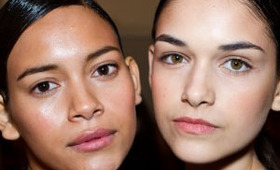
Fashion Week News
Custo Barcelona Makeup, New York Fashion Week S/S 2012
- 1
-

Looks
Quick Hair Styles For The Beach
- 1470
-

Inspiration
Jump on 4 Biggest Holiday 2023 Nail Trends
- 790
-

Fashion Week News
Basso and Brooke, London Fashion Week S/S 2012
- 2
-

Hair
Dolce & Gabbana Hair, Milan Fashion Week S/S 2012
- 16
-
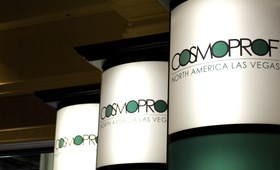
Nails
The Beauty Trends Of Tomorrow
- 26
-
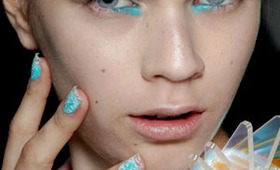
Fashion Week News
David Koma Beauty, London Fashion Week S/S 2012
- 7
-
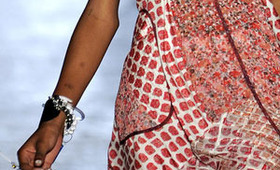
Fashion Week News
EDUN Nails, New York Fashion Week S/S 2012
- 2



